The best running headphones: tested on the roads and trails
The best running headphones will keep you on track with great sound quality, a comfortable fit, and sweatproof design
1. The list in brief ↴
2. Best overall
3. Best for fit
4. Best for run tracking
5. Best for comfort
6. Best for bass
7. Best for rain
8. Comparison table
9. How to choose
10. How we test
The best running headphones allow you to listen to your favourite tunes, audiobooks or podcasts when you get out onto the sidewalks, park paths and trails. We've tested heaps of running headphones to bring you our pick of the very best. Say goodbye to annoying wires, music that cuts out when you're sweating and to earpieces that don't stay in place.
Of course, when you lace up your best trail running shoes and set out on a run, it's good to be able to hear what's going on around you, especially where traffic is involved. The earbuds we've chosen here have a 'through' mode that allows you to still hear your immediate surroundings via built-in microphones. Bear in mind that this doesn't give you the best sense of the direction a sound is coming from, so you'll still need to be on alert when crossing roads and cycle paths.
For us the best running headphones are the Shokz OpenRun Pro, which have an open-ear design that lets you hear the world around you, while still delivering great sound quality with plenty of bass. These are bone conduction headphones, which means your ear canals are left open so you can still hear potential hazards. They won't be to everyone's liking though, so read on for our six top recommendations.
Meet the expert
You can trust Advnture

Cat has been testing running headphones for years, having previously worked as fitness editor for Advnture's sister site TechRadar, and knows what makes a pair particularly good for sport. She loves running with a club, but also knows how useful good tunes can be when you're training solo (the right music has been proven to have a real impact on performance).
The quick list
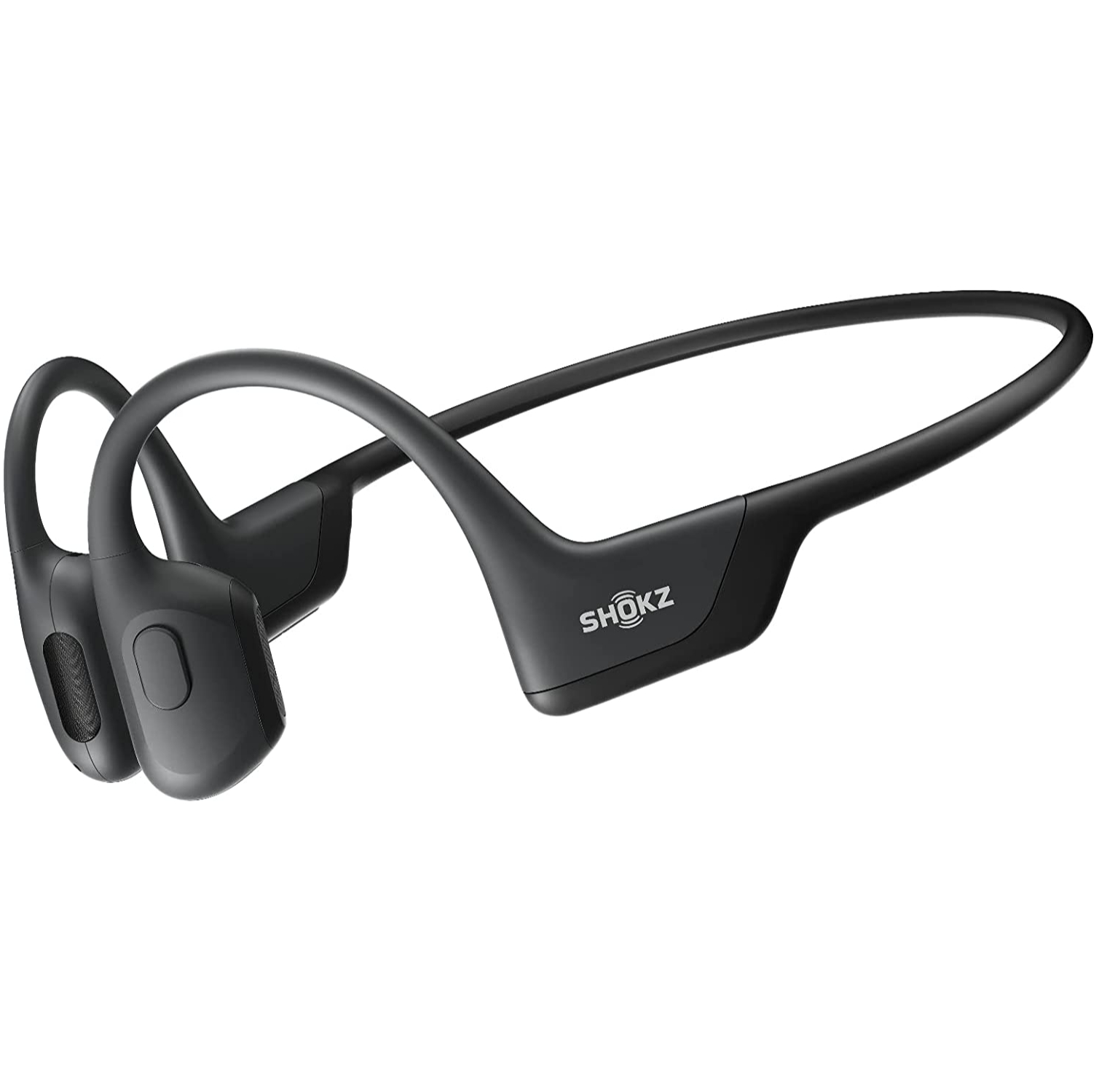
Best overall
Plenty of bass, with an open-ear design for safety and lightweight, springy construction.
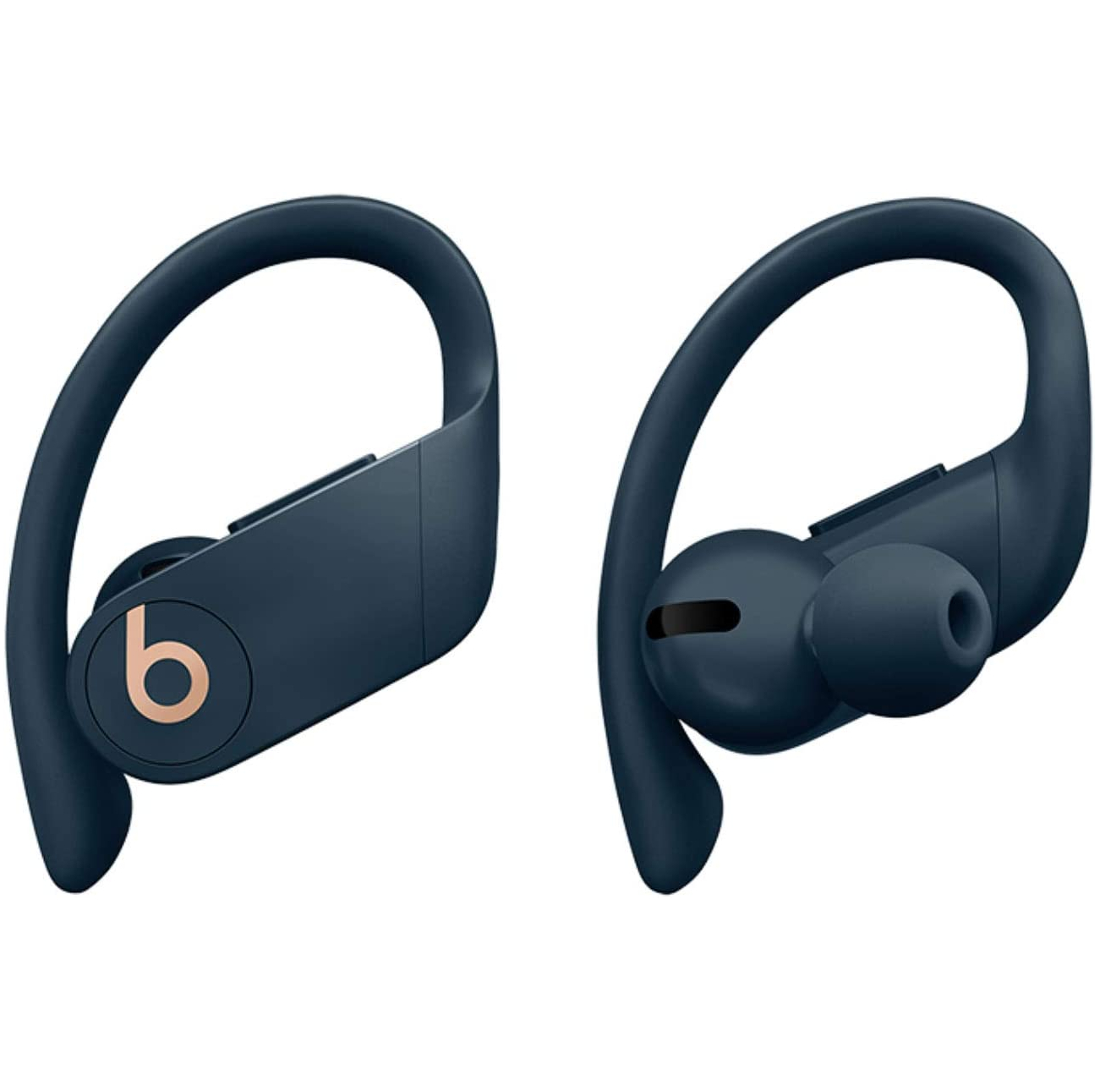
Best for fit
Great for running and HIIT, with a hook design that won't budge when you bounce.
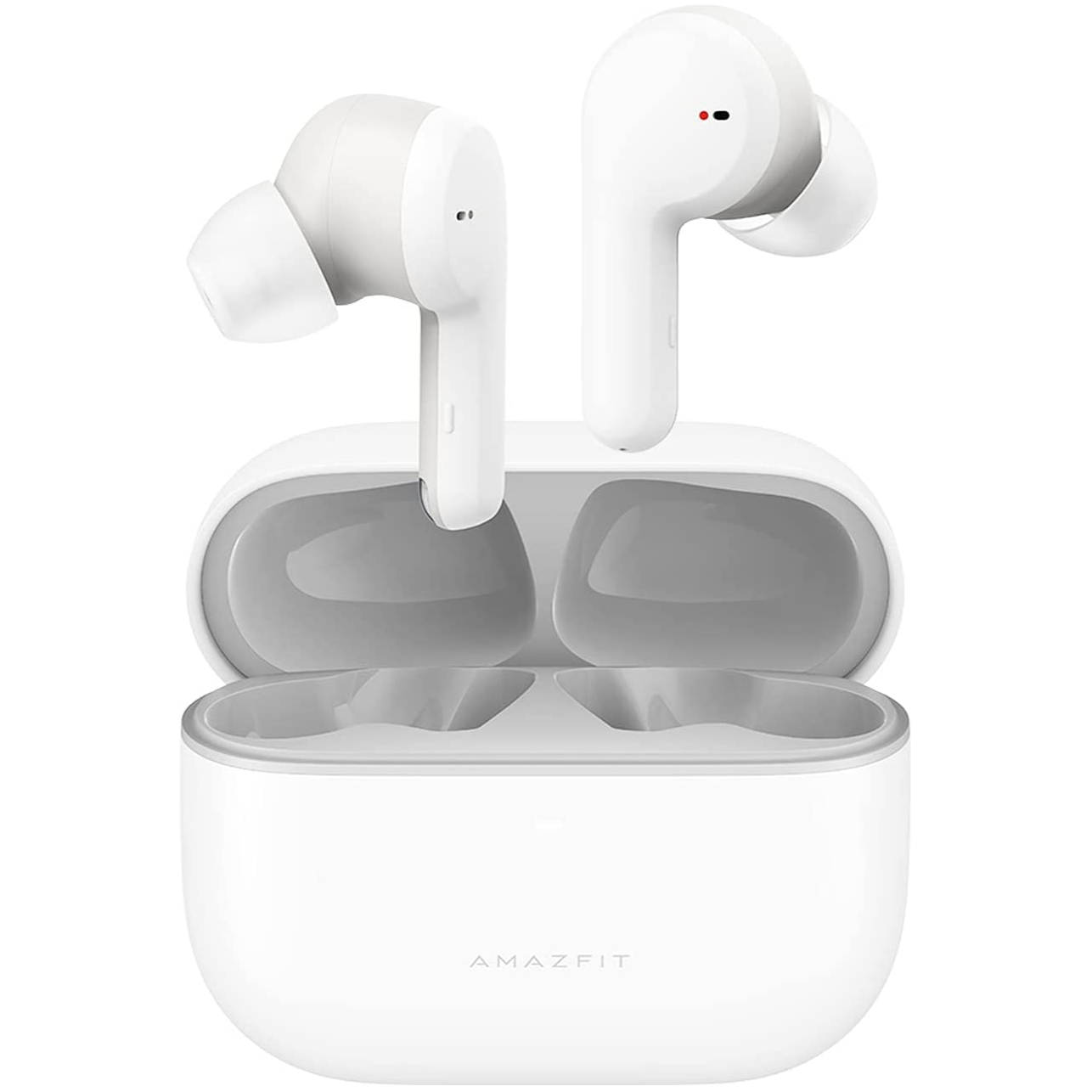
Best for run tracking
No watch? No problem! These buds will track your pace, distance and heart rate automatically when you start running.
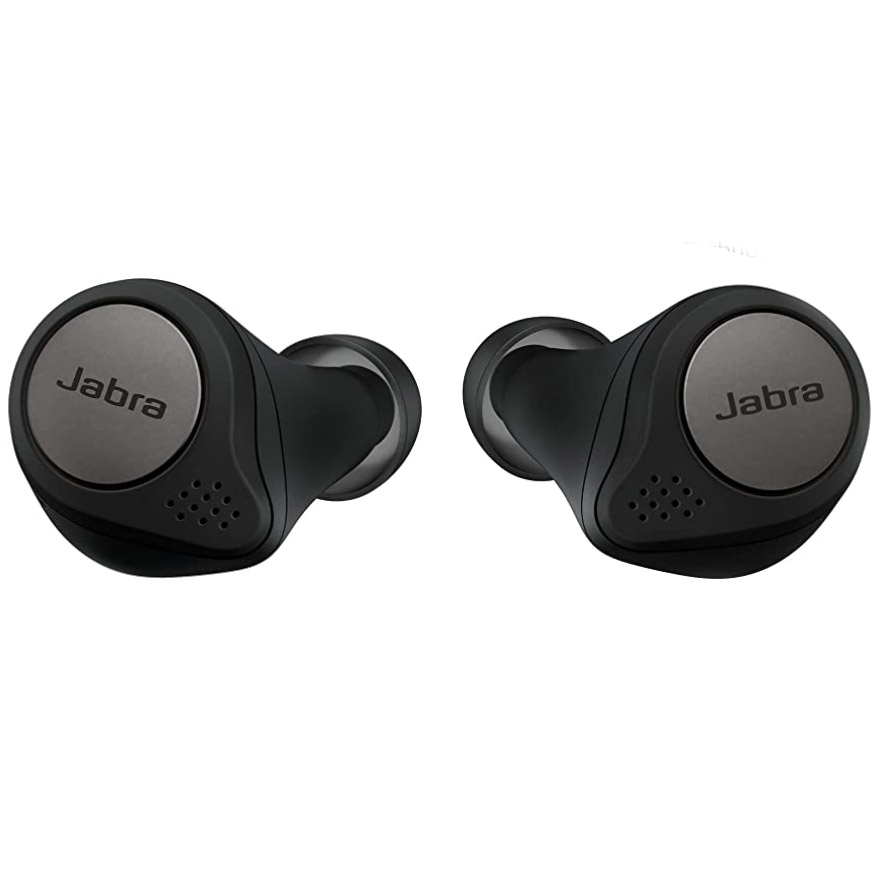
Best for comfort
Super light earbuds with a handy quick recharge, customizable sound levels, and HearThrough function to let ambient noise in.
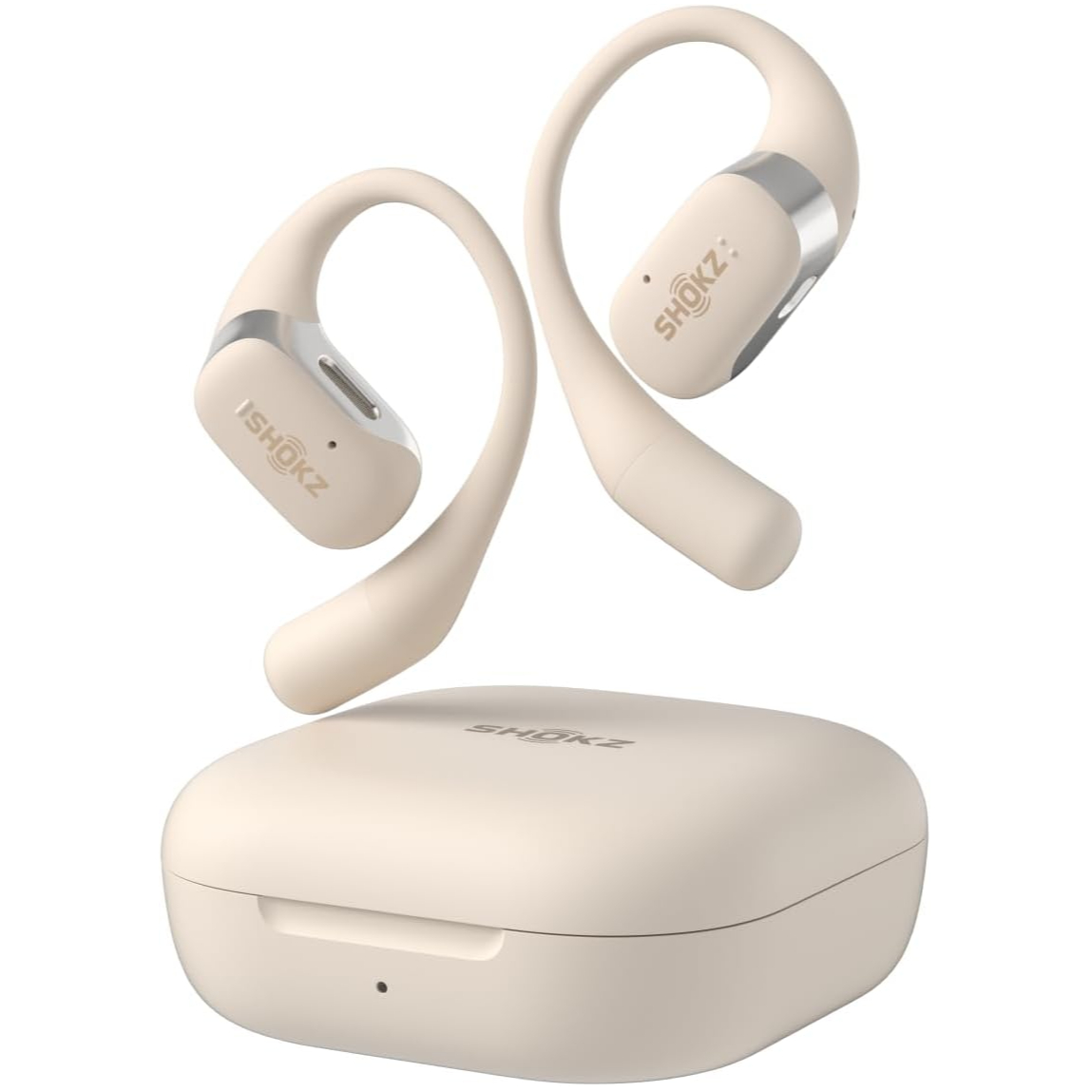
Best for bass
True wireless headphones with an open-ear design so you can hear the world around you, and super rich bass.
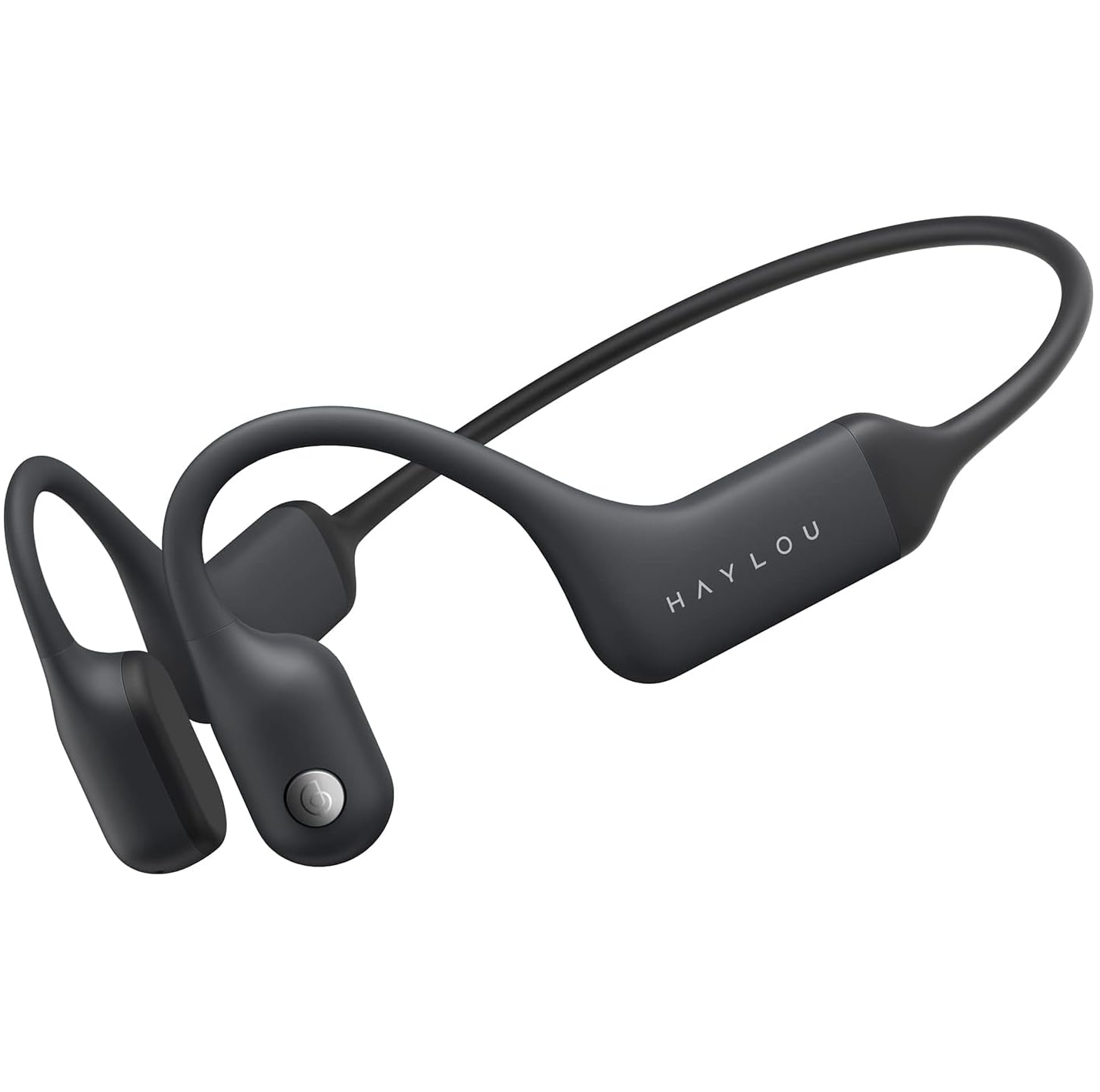
Best for rain
Impressive water resistance for bone conduction headphones, and more affordable than the Shokz OpenRun Pro.
The best running headphones overall
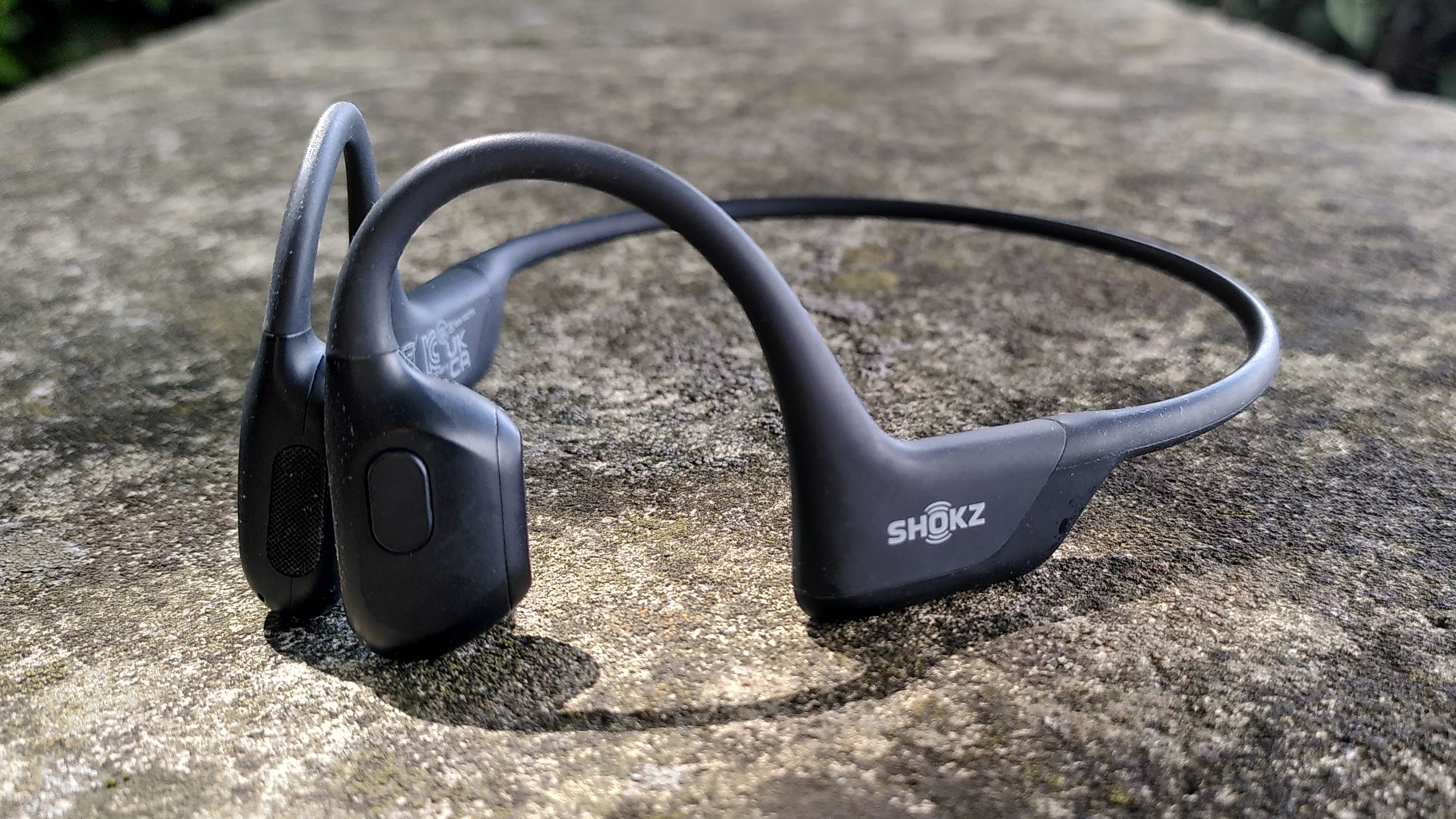
Specifications
Reasons to buy
Reasons to avoid
Shokz (formerly known as Aftershokz) is the biggest name in bone conduction running headphones, and when you try the OpenRun Pro, you'll see why. Although they're a great choice from a safety point of view, allowing you to remain aware of your surroundings, bone conduction headphones are usually seriously lacking when it comes to sound quality. Not the OpenRun Pro. This headset (a successor to the original OpenRun) has new bass transducers and when we tested them, the difference was remarkable. The sound was easily on par with regular earbuds, but without obscuring the outside world.
Shokz has also repositioned the charging port so the headphones are easier to power up, and the control buttons are slightly larger and easier to tap while you're on the move. One thing that hasn't changed, though, is the overall shape and comfort. There's no pinching at all, and the OpenRun pro don't budge or bounce even when you're powering up steps or tackling a technical descent.
The only real downside was that we could sometimes feel a faint tickling sensation when we turned up the volume, but this only happened when we were enjoying some seriously heavy music on our runs. Only metalheads are likely to notice it, and even then it's not too distracting.
Read our full Shokz OpenRun Pro review
The best running headphones for fit
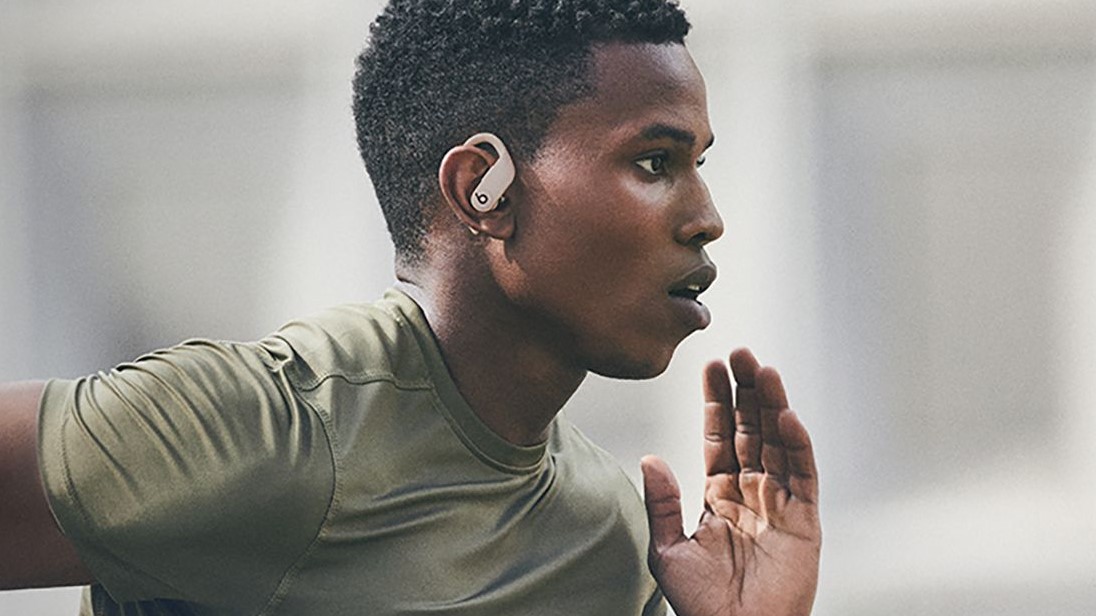
2. Beats Powerbeats Pro
Our expert review:
Specifications
Reasons to buy
Reasons to avoid
The best thing about the Beats Powerbeats Pro ear buds for adventurous runners is that the hoop over the top of your ear pretty much guarantees they will stay in place however gnarly the terrain. This, combined with four different eartip sizes, ensures a great fit for all. Battery life is excellent at nine hours, plus double that from the somewhat large charging case, and you can adjust volume and change track from either ear.
Being an Apple product they pair faster with other Apple tech, and you can use Siri with them. Many trail runners will like the fact that they don’t totally cancel all ambient noise, so you can hear some surround sounds from the landscape you’re running across. The splash-proof IPX4 rating is good enough for most adventure situations, but don’t drop them in a deep puddle, as they are not completely waterproof. The sound quality is good – not overly bass-heavy – but there is no option to alter the EQ to your personal tastes.
The best running headphones for run tracking
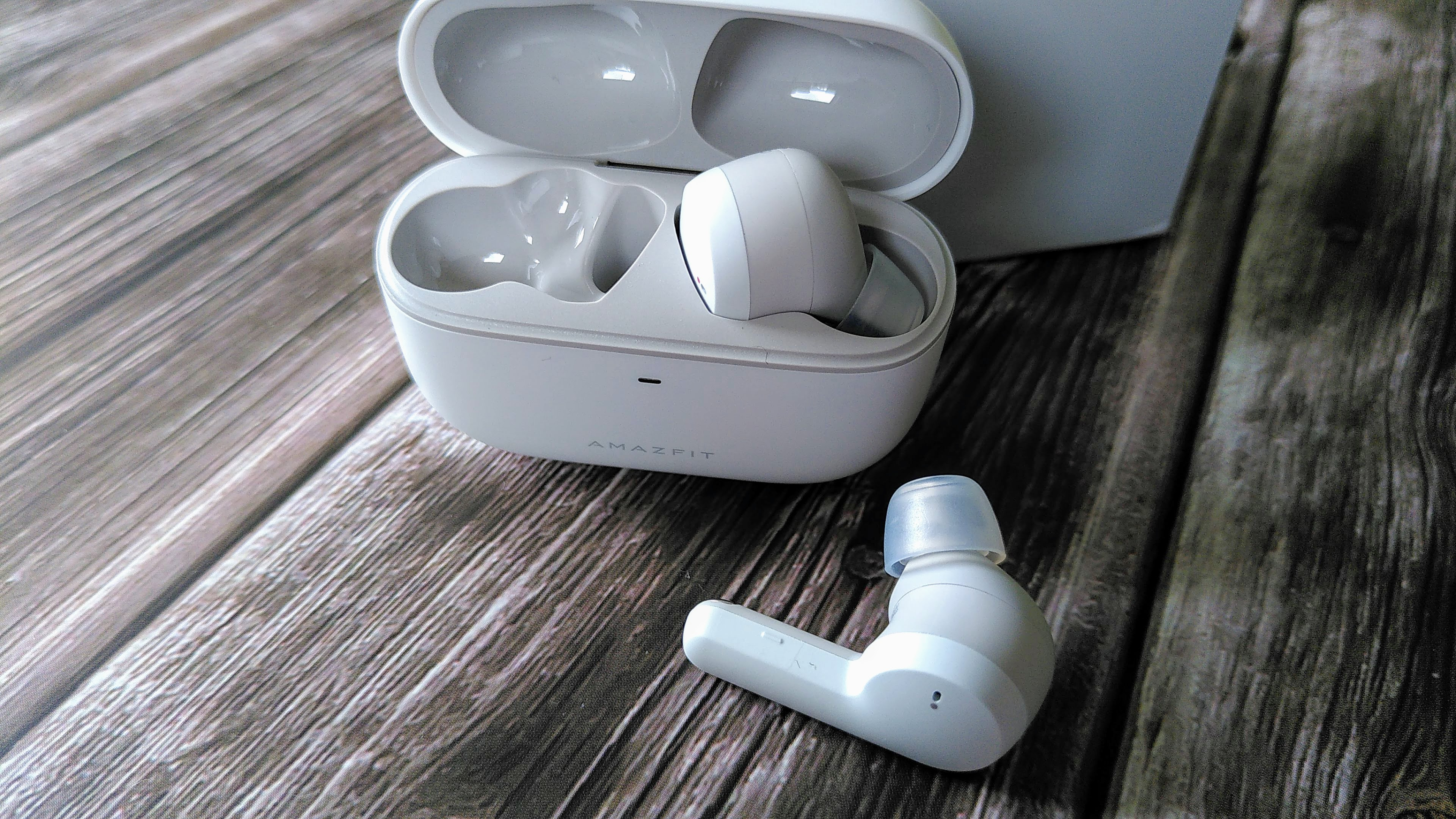
3. Amazfit Powerbuds Pro
Our expert review:
Specifications
Reasons to buy
Reasons to avoid
Amazfit is well known for making affordable fitness trackers and smartwatches, and it's also branching out into running headphones. The Powerbuds Pro don't just feel and sound good, they also track vita stats as you run.
These smart headphones will detect when you break into a run, and track your heart rate, pace, and distance automatically. The results aren't as accurate as you'd get from your best GPS watch (distance is calculated using an accelerometer rather than satellite positioning), but if you prefer to run without anything on your wrist it's an excellent option.
When you're not sweating it out on the trails, the Powerbuds Pro will be looking out for your health. It's all too easy to end up slumping over your desk at work, but these little earbuds can detect when your head is out of alignment and warn you that you're putting your neck at risk. This doesn't happen automatically (you have to choose when to check your posture), but it's a handy tool and it can be very alarming to hear that you're putting so much strain on your cervical spine, you might as well be carrying a toddler on your head.
The best running headphones for comfort
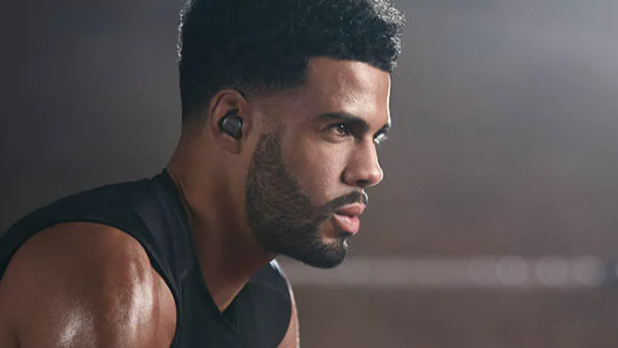
4. Jabra Elite Active 75t
Our expert review:
Specifications
Reasons to buy
Reasons to avoid
These super light, dust-resistant and waterproof running headphones are brilliant for exploring. There are three sizes of grippy eartip to ensure a good fit for most ear-shapes and they fit very close to the head. The quick recharge function is longer and the battery life is on the shorter side compared to others in this test, but 7.5 hours from the headphones is still good, and with the streamlined case only weighing 35g it’s very easy to take that extra 20+ hours of charge with you.
The Jabra Elite Active 75t have fully customizable sound levels through the Jabra Sound+ app, and you can use Siri and Alexa too. Trail runners will enjoy the HearThrough mode which allows ambient sound through, however ultra runners can’t use one bud at a time to extend battery life on long races as removing and re-inserting one earbud automatically pauses and resumes playback.
The best running headphones for bass
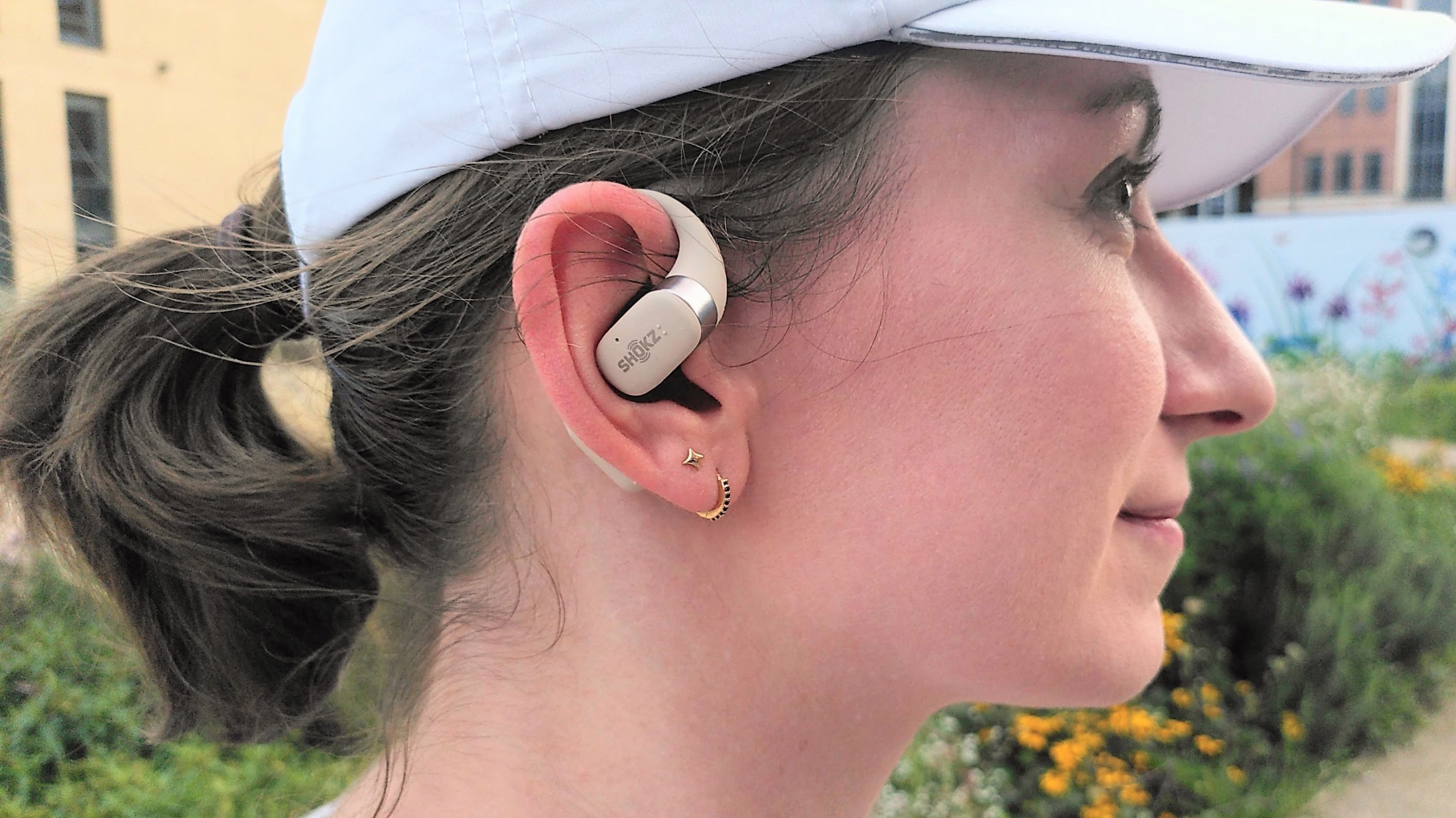
Specifications
Reasons to buy
Reasons to avoid
The OpenFit are different from other Shokz running headphones. They still leave most of your ear canal open, allowing you to hear noises like traffic and cyclists around you, but rather than bone conduction, they basically use tiny speakers that funnel sound straight into your ears. That might sound like a recipe for sound leakage, but surprisingly that's not the case, and other runners will be totally unaware of your workout soundtrack.
Sound quality is exceptional, too – particularly if you enjoy plenty of bass, as I do. The Shokz OpenFit are some of the few running headphones that really do justice to your music, and even beat a lot of non-sports headsets I've tested over the years.
The only downside is that they don't allow quite so much ambient sound through as bone conduction headphones, so I'd be less inclined to use them for races or shared bike/footpaths.
Read our full Shokz OpenFit review
The best running headphones for rain
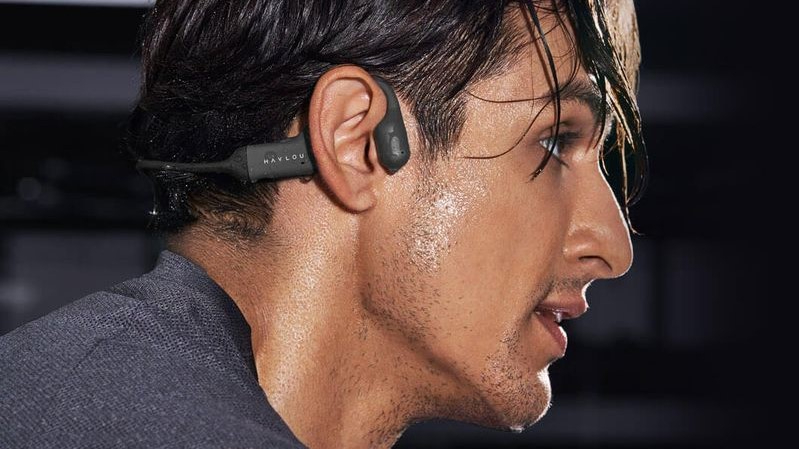
Specifications
Reasons to buy
Reasons to avoid
The Haylou PurFree BC01 are a great option if you like the idea of bone conduction headphones, but your budget won't quite stretch to the Shokz OpenRun Pro. These are a little more affordable, and should serve you well provided conditions aren't too windy.
Haylou's headphones are well designed, with excellent water resistance to protect against rain and sweat, and a grippy silicone coating that helps them stay firmly in place. The buttons are much easier to find than those of some other headsets we've tested too, which means starting, pausing, and skipping tracks isn't a headache.
The sound quality isn't quite as good as that of pricier running headphones, and you may find that your favorite tunes sound a little tinner than usual. We were also told that the built-in microphone picked up quite a lot of wind noise during calls, so you'll want to position yourself accordingly so the other person can hear you clearly.
Read our full Haylou PurFree BC01 review
Running headphones comparison table
| Headphones | List price | Weight | Battery life | Style |
| Shokz OpenRun Pro | $179.95 / £159.95 | 1.02oz / 29g | 10 hours | Wireless bone conduction headphones |
| Beats Powerbeats Pro | $249.95 / £219.95 | 0.74oz / 21g (without case) | 9 hours | Wireless ear bud headphones |
| Amazfit Powerbuds Pro | $149.99 / £119.98 | 0.24oz / 6.7g (without case) | 9 hours | Wireless ear bud headphones |
| Jabra Elite Active 75t | $249.99 / £189.99 | 0.38oz / 11g (without case) | 7.5 hours | Wireless ear bud headphones |
| Shokz OpenFit | $179.95 / £179 | 0.29oz / 8.3g (without case) | 7 hours | Wireless open ear headphones |
| Haylou PurFree BC01 | $133 / £100 | 1oz / 23g | 8 hours | Wireless bone conduction headphones |
How to choose running headphones
1. Size/fit
The best running headphones first and foremost need to be secure and not drop out as you hammer around the trails, twisting your body in all different directions and fighting your way through various patches of undergrowth. For some, the in-ear earbud design will fit perfectly (look for different sizes of eartip to get the most accurate fit) but others will welcome the more secure styles that hook over the ear.
2. Comfort/weight
Some running headphones have an earbud that inserts directly into the ear hole, whereas a bone-conducting headphone sits just outside. Some might find the in-ear buds can be tiring after a few hours, so if you can’t bear something being inside your ear for too long, bone-conducting headphones might be for you. Lighter is better too, but with most of the best running headphones on the market right now there is not much to choose between them here.
3. Battery life
No matter how long your runs are, the longer the battery life the better, so you can reduce the faff of charging. Many of the earbud designs charge within their case, which is a super nice feature – simply take the fully charged case with you for an extra power boost on the go. If you run longer distances like ultras, how you charge the headphones will be an important factor for you – look for earbuds you can use one at a time to extend battery life even further.
4. Functions
At the most basic level a pair of running headphones should give you the option to pause and skip tracks and adjust the volume, but some can also take calls and pair with smartphone features like Siri, so decide how whizzy you need your headphone tech to be before you buy.
5. Personalization
Sound is very subjective – one person might love a heavy base while another prefers a different balance entirely, and different music suits different EQ levels too. Some headphones give you the ability to completely personalise the sound through an app, or there might be a choice of a few EQ levels, and others just dole out a set sound. If sound quality is of the utmost importance to you, choose a pair of headphones with the ability to fully personalise EQ.
6. Protection level
Each headphone will have an IP rating to show how dirt, dust and water-resistant they are. Usually sports headphones designed for outdoor activities like running will have a good level of protection against sweat, grit and light showers or splashes, but not many are fully waterproof enough to take swimming with you or survive complete emersion dropped in a lake, so check the IP rating carefully if this is one of your requirements. There are two numbers after the letters IP (which stand for Ingress Protection), the first relates to how dustproof the headphones are (often you just see an ‘X’ here, because it’s not a major factor for headphones) and the second number tells you how waterproof there are. The higher the numbers the better: IPX4 means a pair of headphones are merely splash-proof, while IP67 mean they are fully dust-proof and totally waterproof.
7. Price/value
Price varies wildly with running headphones. You can wing it with a cheap knock-off on Amazon from little-known companies for about $30, but if you want the security of excellent sound quality, durability and good customer service if anything goes wrong, you might prefer to invest in a more expensive pair from a well-known brand.
How we test running headphones
We take each pair of running headphones out on the roads and trails for multiple runs to see how they perform in real life. We start with a full charge and see how long it takes for them to run flat, then compare that to the manufacturer's claimed battery life.
We test headphones with a variety of different types of music to reflect real conditions, and at various volumes to pick up any issues like noticeable vibration (for bone conduction headphones) or distortion. For headphones with built-in microphones, we make calls in still and windy conditions,and we practice using each pair of running headphones' controls on the move to see how responsive they are, and how easy to use while moving.
For more details, see how Advnture tests products.
Advnture Newsletter
All the latest inspiration, tips and guides to help you plan your next Advnture!

Cat is Homes Editor at TechRadar and former editor of Advnture. She's been a journalist for 15 years, and cut her teeth on magazines before moving online. She helps readers choose the right tech for their home, get the best deals, and do more with their new devices.
